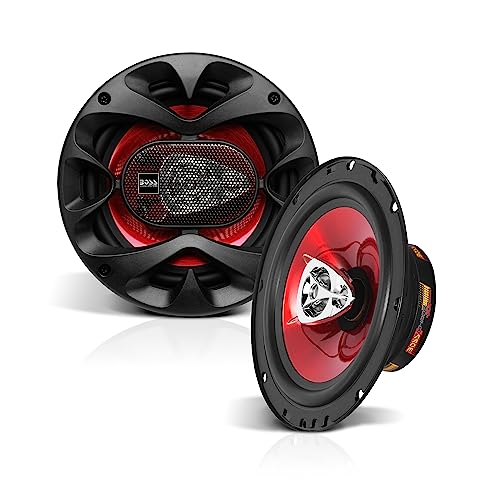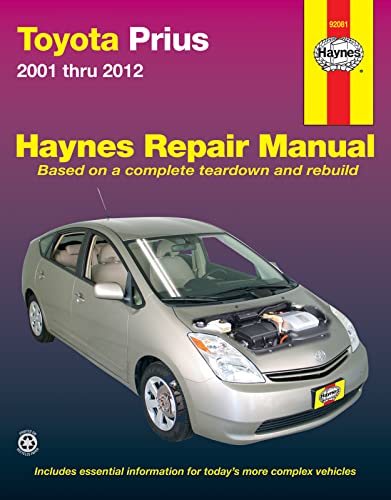As an Amazon Associate, I earn from qualifying purchases
Have you ever noticed your Toyota Camry’s gas light flick on and wondered, “How many miles can I actually drive before running out of fuel?” That small warning light can cause a lot of anxiety, especially when you’re not near a gas station. Knowing exactly how far you can go after the light comes on can save you from unexpected stops and keep your drive smooth.
You’ll discover the real distance your Camry can travel on empty and get practical tips to avoid running dry. Keep reading—you’ll want this info for your next drive.

Credit: community.cartalk.com
Gas Light Function
The gas light function in a Toyota Camry is an important part of your car’s fuel system. It alerts you when your fuel level is low. This warning helps you avoid running out of gas on the road. Understanding how this light works can help you drive safer and plan your fuel stops better.
The gas light is designed to turn on at the right moment to give you enough time to find a gas station. Knowing when it activates and its purpose is key to using this feature well.
When Does The Light Activate
The gas light in a Toyota Camry usually turns on when about 1.5 to 2 gallons of fuel remain. This is roughly 30 to 40 miles of driving. The exact distance depends on your driving habits and road conditions. The light comes on after the fuel gauge needle reaches the reserve mark.
It acts as a clear signal that your fuel is running low. The light will stay on until you refill your gas tank.
Purpose Of The Warning
The main purpose of the gas light is to warn you about low fuel. It prevents your car from stopping unexpectedly. Running out of gas can damage your engine and leave you stranded. The warning gives you time to find a gas station before your fuel runs out.
This function promotes safe driving and avoids stress. It also helps keep your fuel system in good condition by preventing the pump from running dry.

Credit: www.youtube.com
Mileage After Light On
The gas light in a Toyota Camry signals low fuel. It means the car is running on reserve fuel. Drivers wonder how far they can drive after this light turns on. The mileage after the gas light comes on varies by model and driving conditions.
Typical Range For Toyota Camry
Most Toyota Camry models run about 30 to 50 miles after the gas light appears. This range depends on the model year and engine type. For example, newer models with fuel-efficient engines may travel closer to 50 miles. Older or less efficient engines might only go 30 miles. This estimate gives drivers enough time to find a gas station safely.
Factors Affecting Distance
Several factors change how far the Camry travels on reserve fuel. Driving speed plays a big role. Faster driving uses more fuel and reduces distance. Road type matters too. Highway driving is often more fuel-efficient than city driving. Weather conditions also affect mileage. Cold weather can lower fuel efficiency. Lastly, the car’s condition impacts how far it can go. Well-maintained engines use fuel better than those with issues.
Fuel Tank Details
The fuel tank is an important part of the Toyota Camry. It holds the gas needed to keep the car running. Understanding the tank size helps you know how far you can drive before refueling. It also explains what happens when the gas light comes on.
Knowing the fuel tank details can prevent surprises on the road. It helps plan your trips better. Let’s look at the Camry’s fuel capacity and the reserve fuel amount.
Camry Fuel Capacity
The Toyota Camry has a fuel tank capacity of about 15.8 gallons. This size allows for a good driving range before needing gas. With a full tank, you can travel many miles depending on driving habits. This capacity is standard for midsize sedans like the Camry.
Reserve Fuel Amount
The gas light usually turns on when about 2 to 3 gallons remain. This reserve fuel gives you time to find a gas station. It translates to roughly 30 to 40 miles of driving. Driving on reserve fuel is not ideal but helps in emergencies.
Knowing the reserve amount helps avoid running out of gas. It keeps your Camry running smoothly and safely on the road.
Driving Tips On Low Fuel
Driving with low fuel in your Toyota Camry requires care. The gas light signals limited fuel left. Staying calm and driving smart helps avoid problems. Use these tips to protect your car and yourself on the road.
Safe Driving Practices
Drive smoothly to save fuel. Avoid quick stops and fast starts. Keep speed steady and slow down on highways. Use cruise control if possible. Turn off air conditioning to reduce engine load. Check tire pressure to improve mileage. Plan your route to avoid traffic jams. These habits extend the distance you can drive with low fuel.
Avoiding Fuel-related Issues
Running out of gas can harm your Toyota Camry. It can damage the fuel pump and engine parts. Do not push your car to empty. Stop at the nearest gas station as soon as possible. Keep an emergency gas can in the trunk for help. Regularly check the fuel gauge to avoid surprises. Fill up before the tank drops below a quarter full. This keeps your car healthy and avoids roadside risks.
Consequences Of Running Out
Running out of gas in a Toyota Camry can cause several problems. It affects your safety, car health, and daily plans. Knowing these consequences helps you avoid trouble on the road.
Potential Vehicle Damage
Running out of fuel can harm your car’s engine. The fuel pump needs gas to stay cool and lubricated. Without fuel, the pump can overheat and fail. Replacing a fuel pump is costly and takes time.
Also, debris in the gas tank may clog fuel filters. This blockage can make the engine run poorly or stall. Engine damage may occur if the car stops suddenly on the road.
Costs And Inconveniences
Stopping without gas can leave you stranded in unsafe places. Waiting for help wastes your time and causes stress. Calling roadside assistance or a tow truck can be expensive.
Delays affect your daily schedule. You might miss appointments or important events. The cost of repairs and towing adds up, making running out of gas costly overall.

Credit: www.etags.com
How To Reset The Gas Light
Resetting the gas light on a Toyota Camry is a simple task. It helps keep the fuel system accurate. This guide shows how to reset the gas light step by step. Follow these easy instructions to ensure your car’s fuel warning works correctly.
Steps For Camry Models
First, turn the ignition to the “On” position. Do not start the engine. Next, press and hold the trip meter reset button on the dashboard. Keep holding the button until the gas light blinks and then goes off. Release the button. The gas light reset is complete.
When To Reset
Reset the gas light after refueling. This resets the fuel sensor reading. It helps the car show the correct fuel level. Do not reset the gas light while driving. Always reset it when the car is parked. This keeps the fuel warning accurate and reliable.
Frequently Asked Questions
How Many Miles Can A Toyota Camry Run On Gas Light?
A Toyota Camry usually runs about 30 to 50 miles after the gas light turns on.
What Does The Gas Light Mean In A Toyota Camry?
The gas light means the fuel level is very low and you should refuel soon.
Is It Safe To Drive A Toyota Camry With The Gas Light On?
Driving with the gas light on is risky. It’s best to refuel quickly to avoid running out.
How Accurate Is The Gas Light Mileage In A Toyota Camry?
The gas light mileage is an estimate and can vary depending on driving style and road conditions.
Can Running Low On Gas Damage A Toyota Camry?
Frequently running on low gas can harm the fuel pump and reduce engine performance.
How To Reset The Gas Light In A Toyota Camry?
The gas light resets automatically after refueling and driving a short distance.
Conclusion
The gas light in a Toyota Camry usually comes on with about 30 to 50 miles left. This gives enough time to find a gas station. Driving beyond this range can cause problems. Always refuel soon to avoid running out of gas.
Knowing this helps keep your car running smoothly. Stay safe and plan your stops wisely.
As an Amazon Associate, I earn from qualifying purchases


